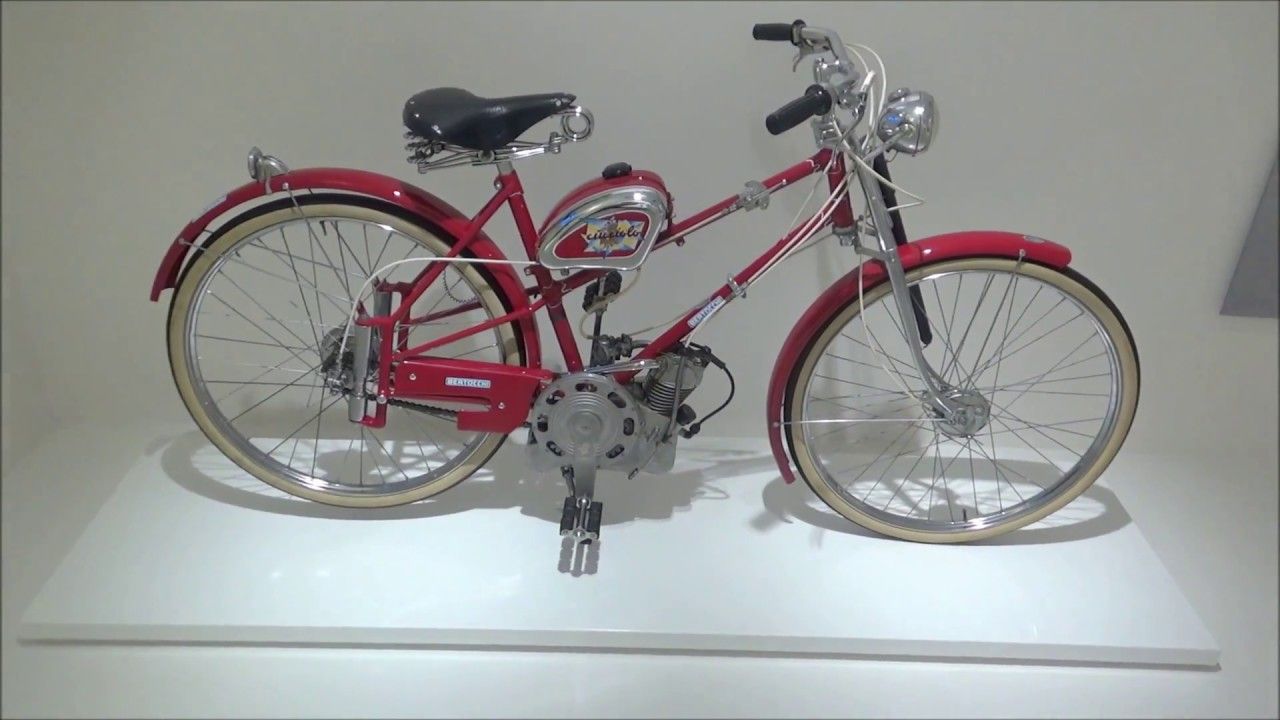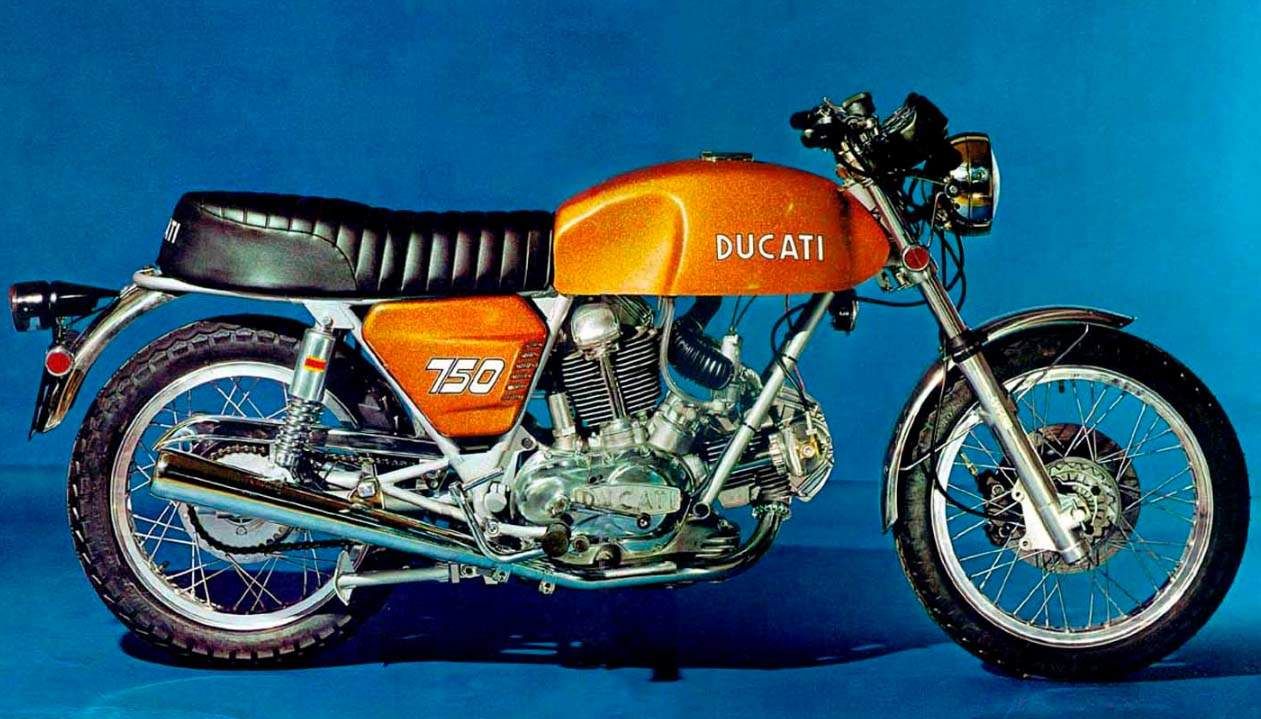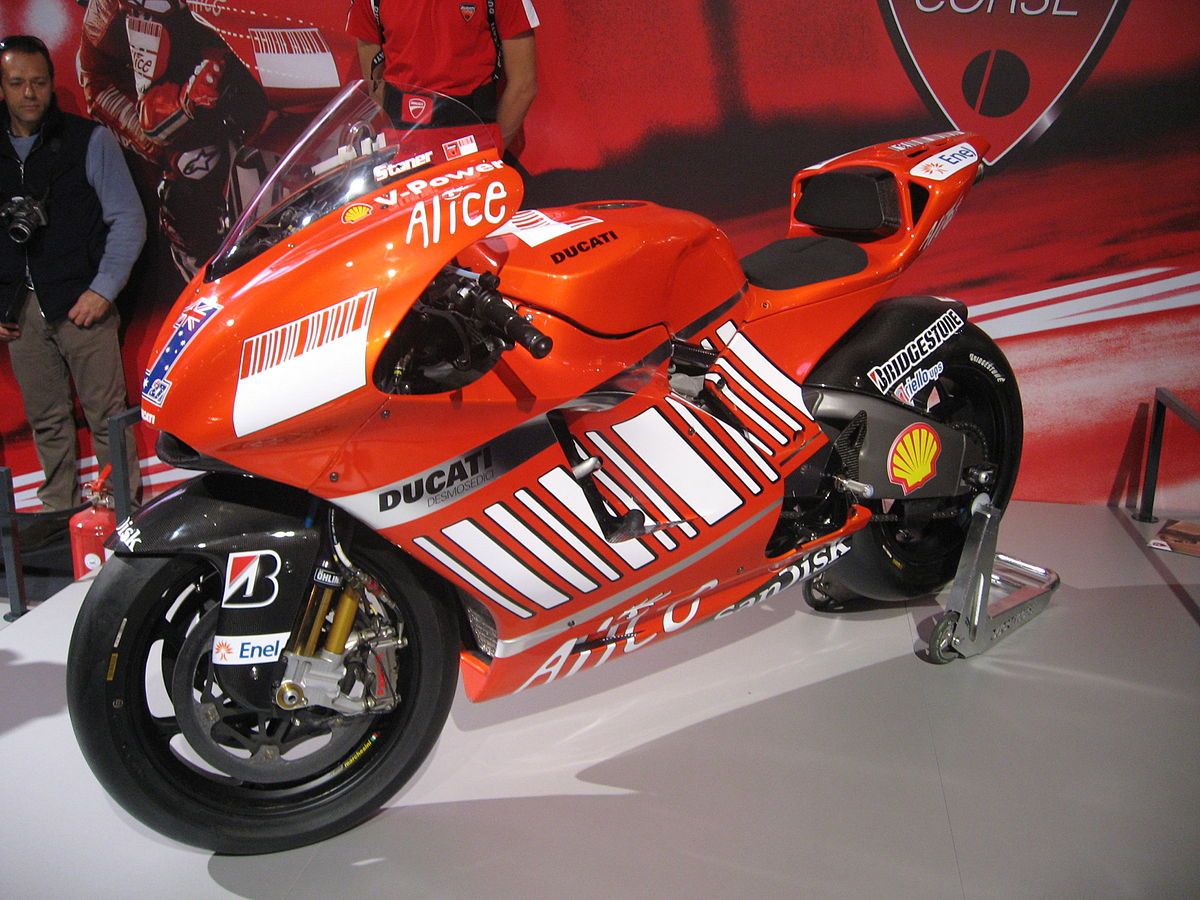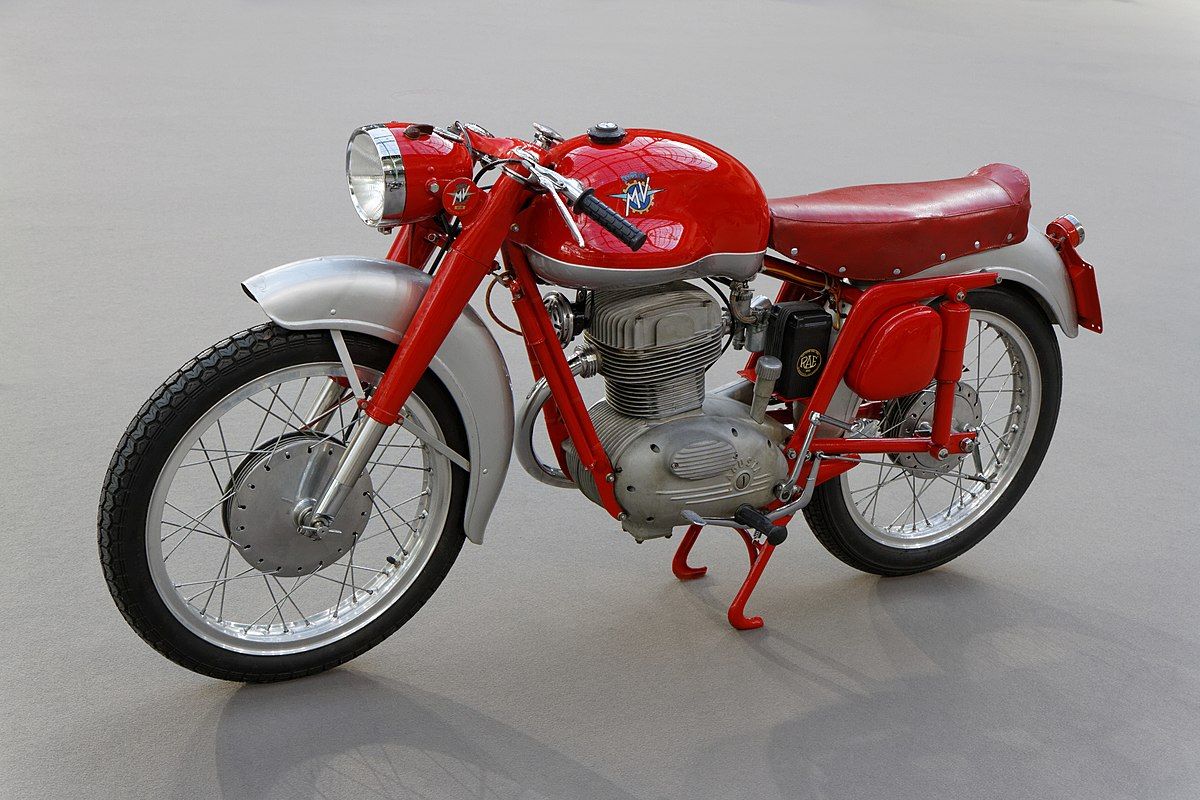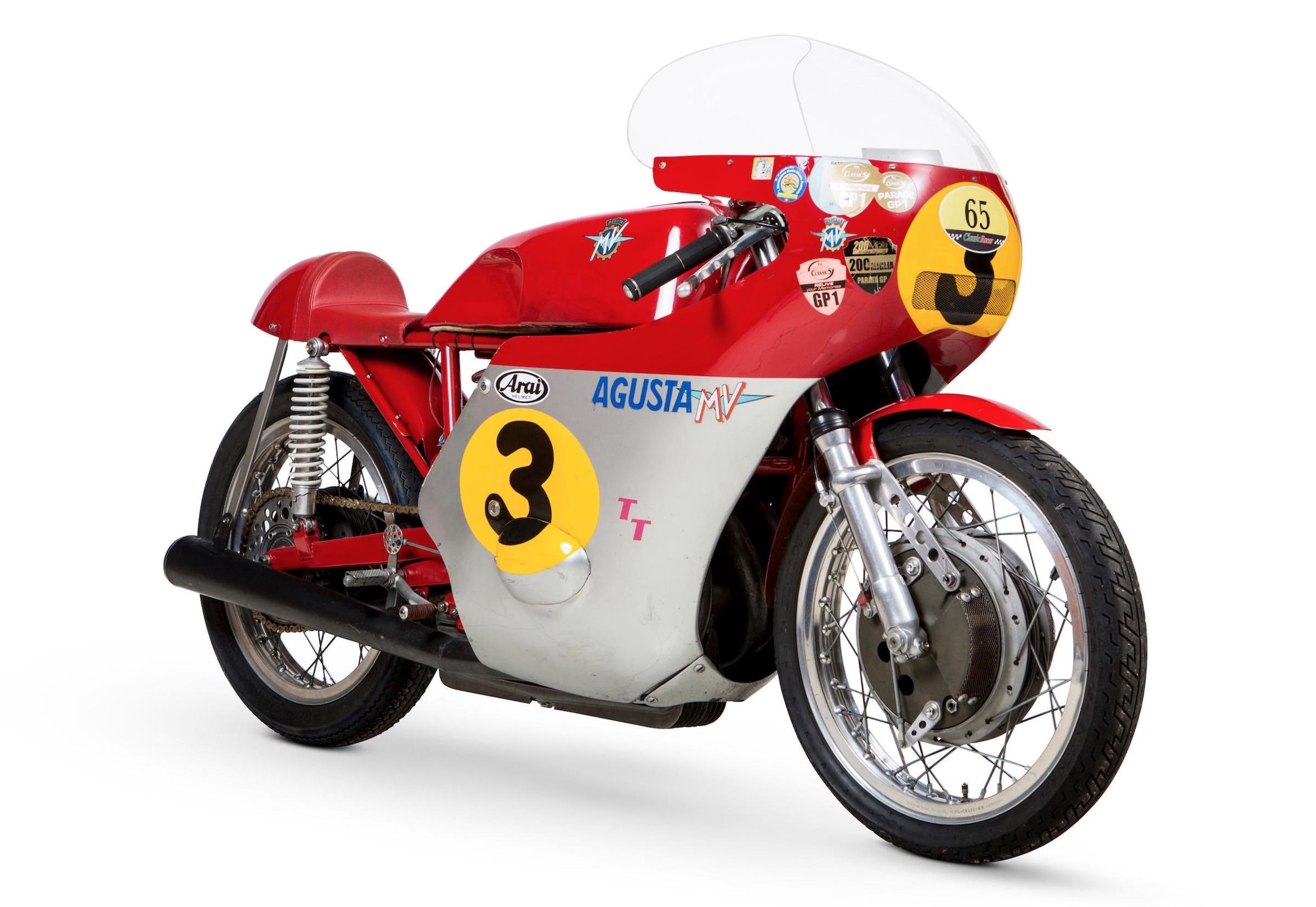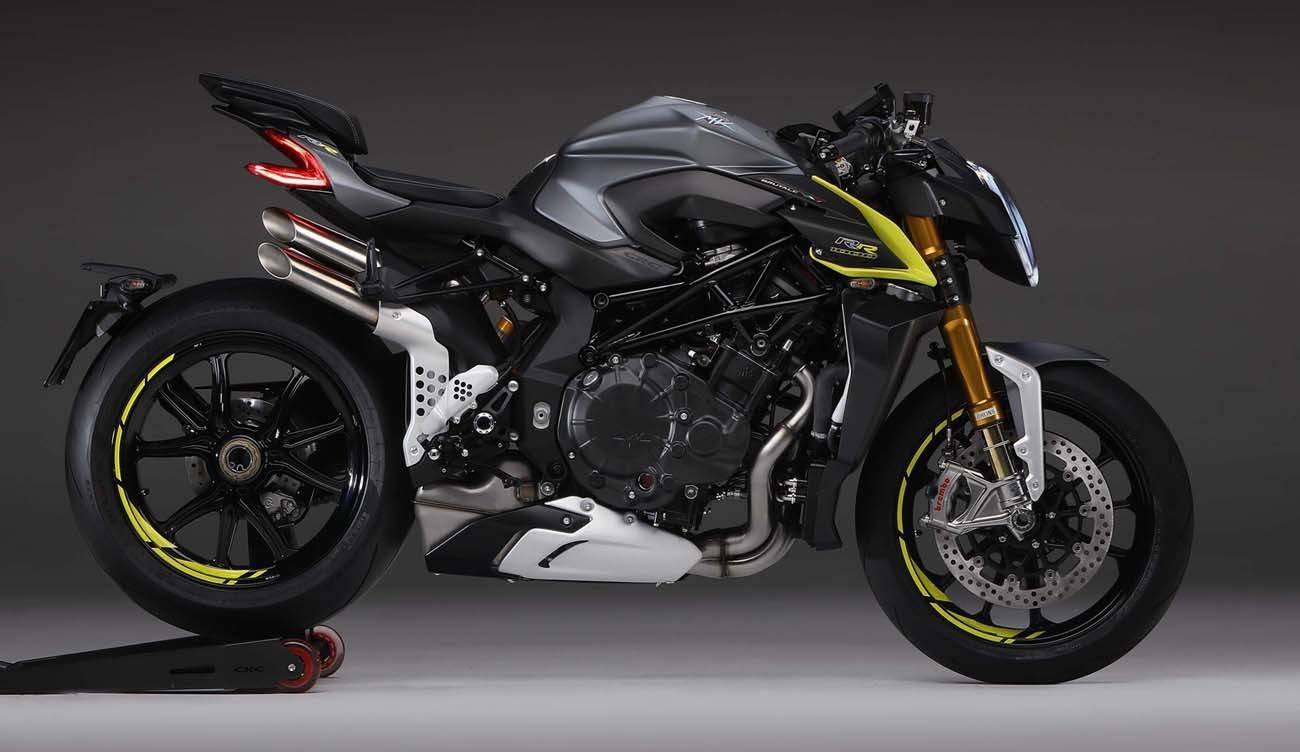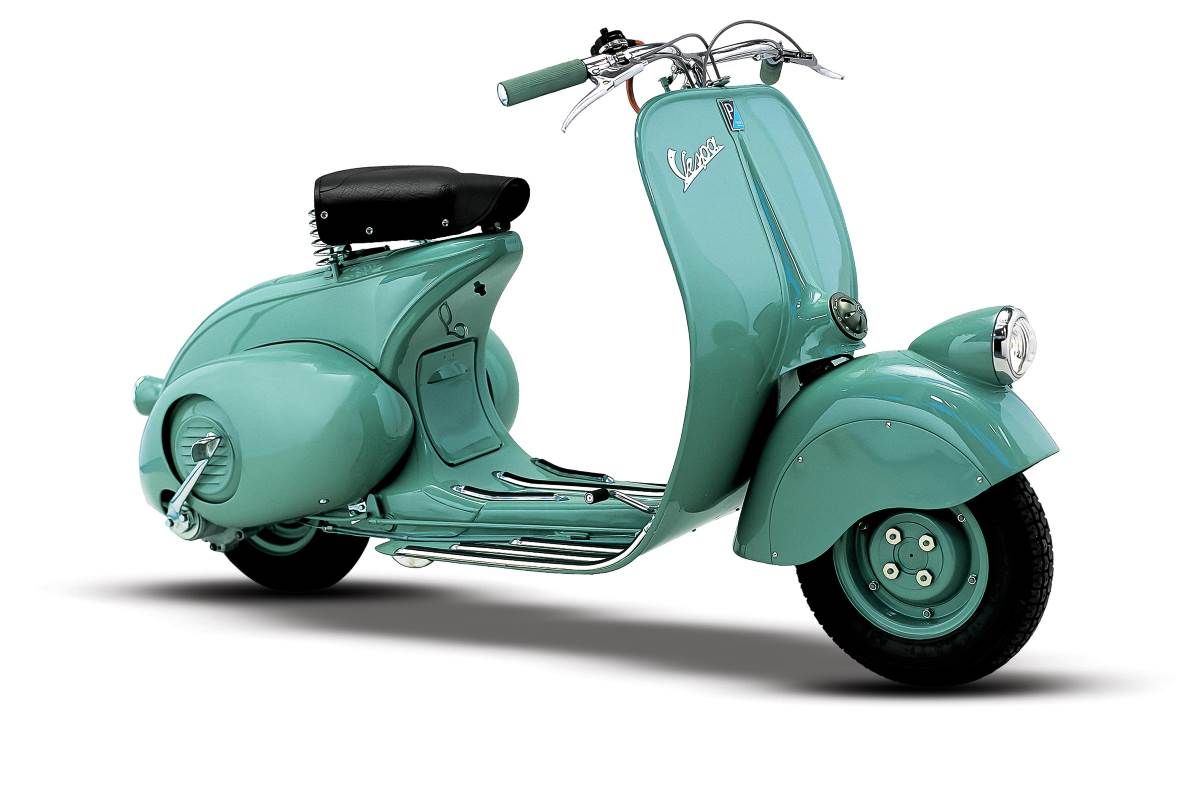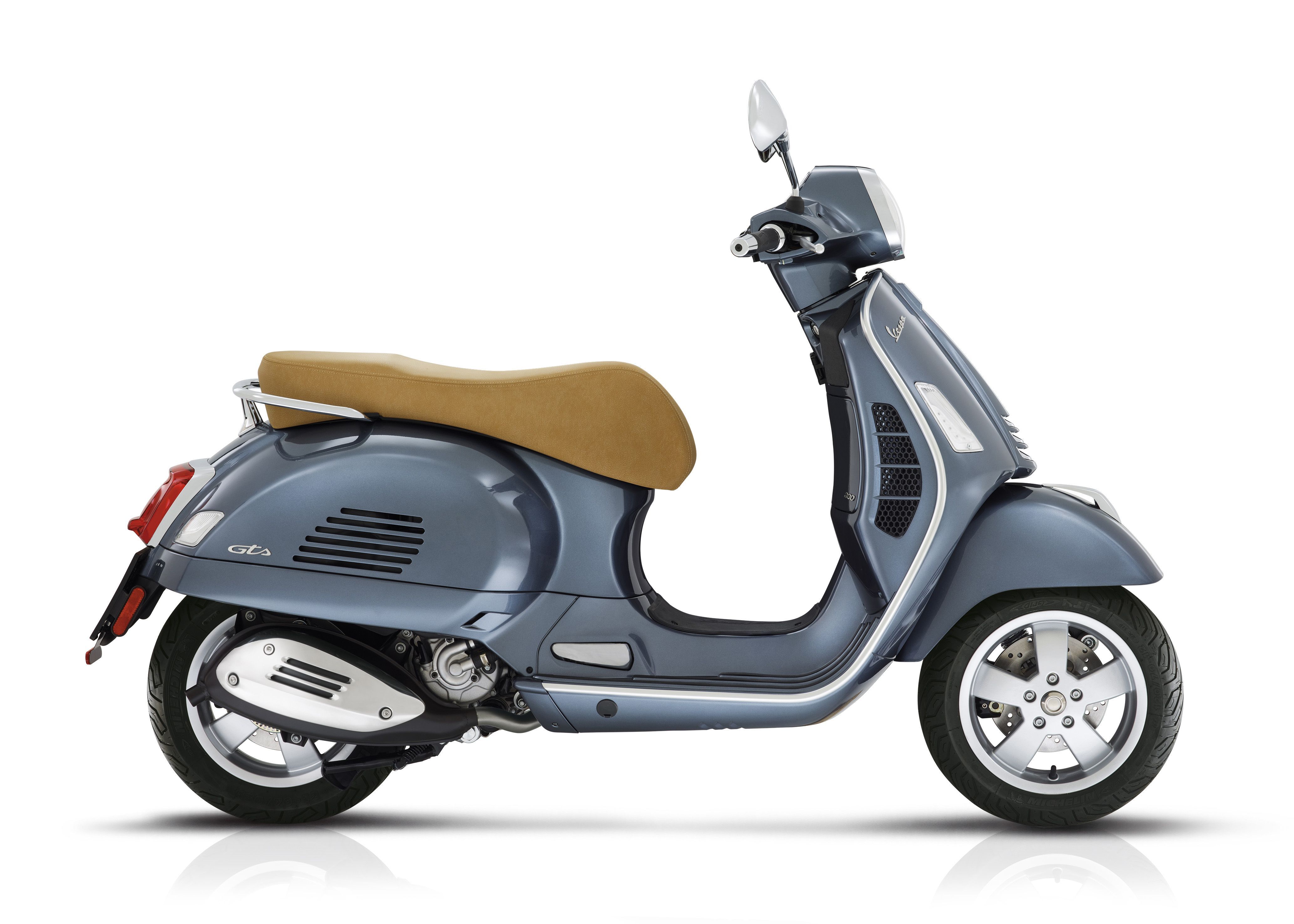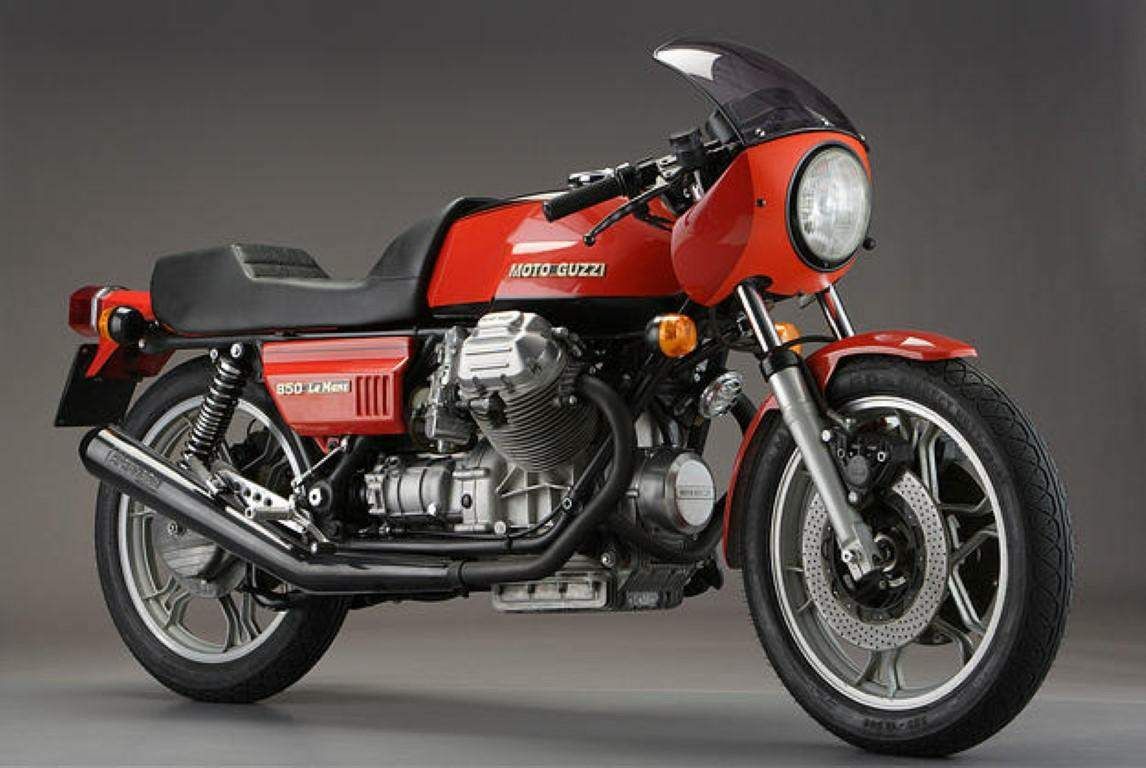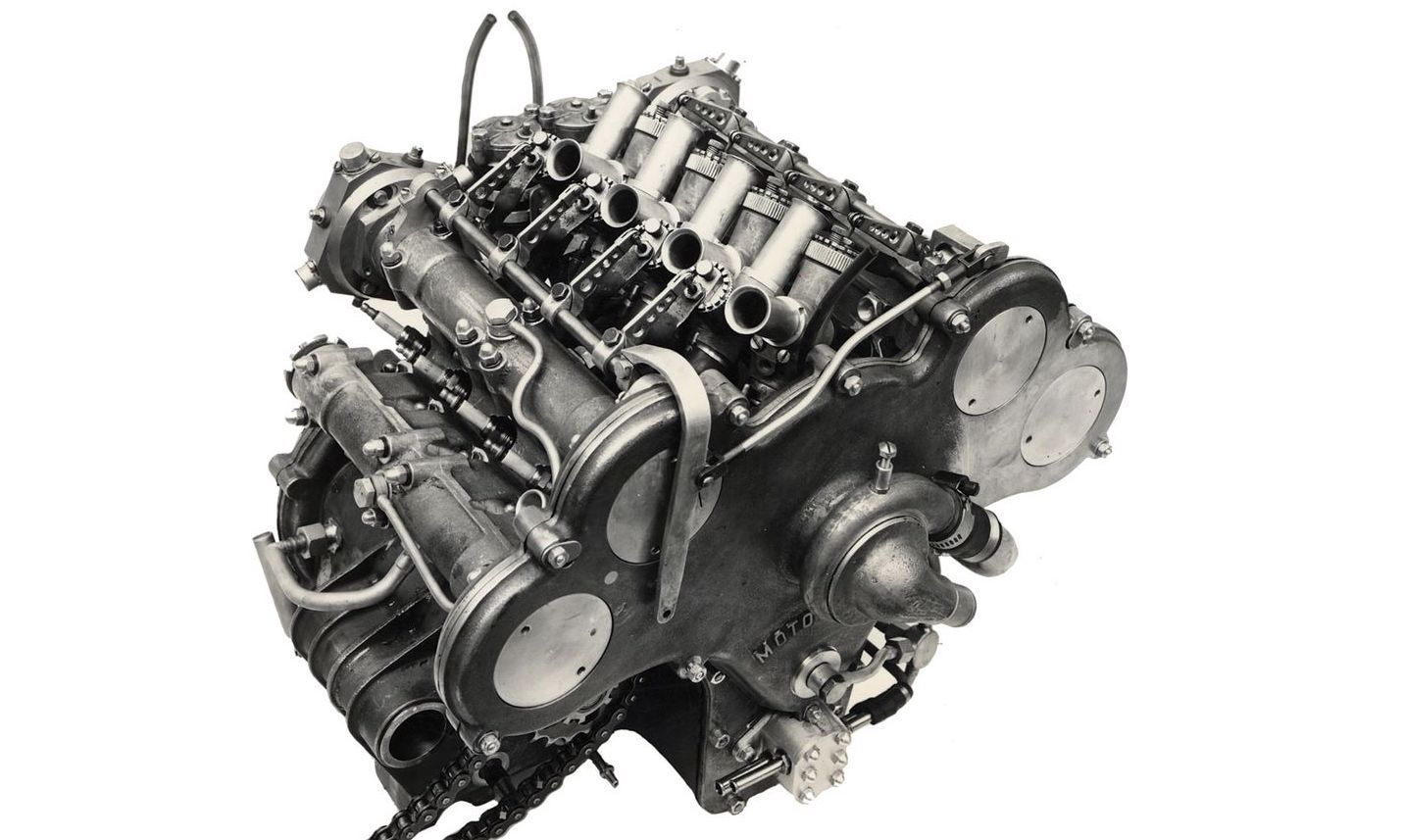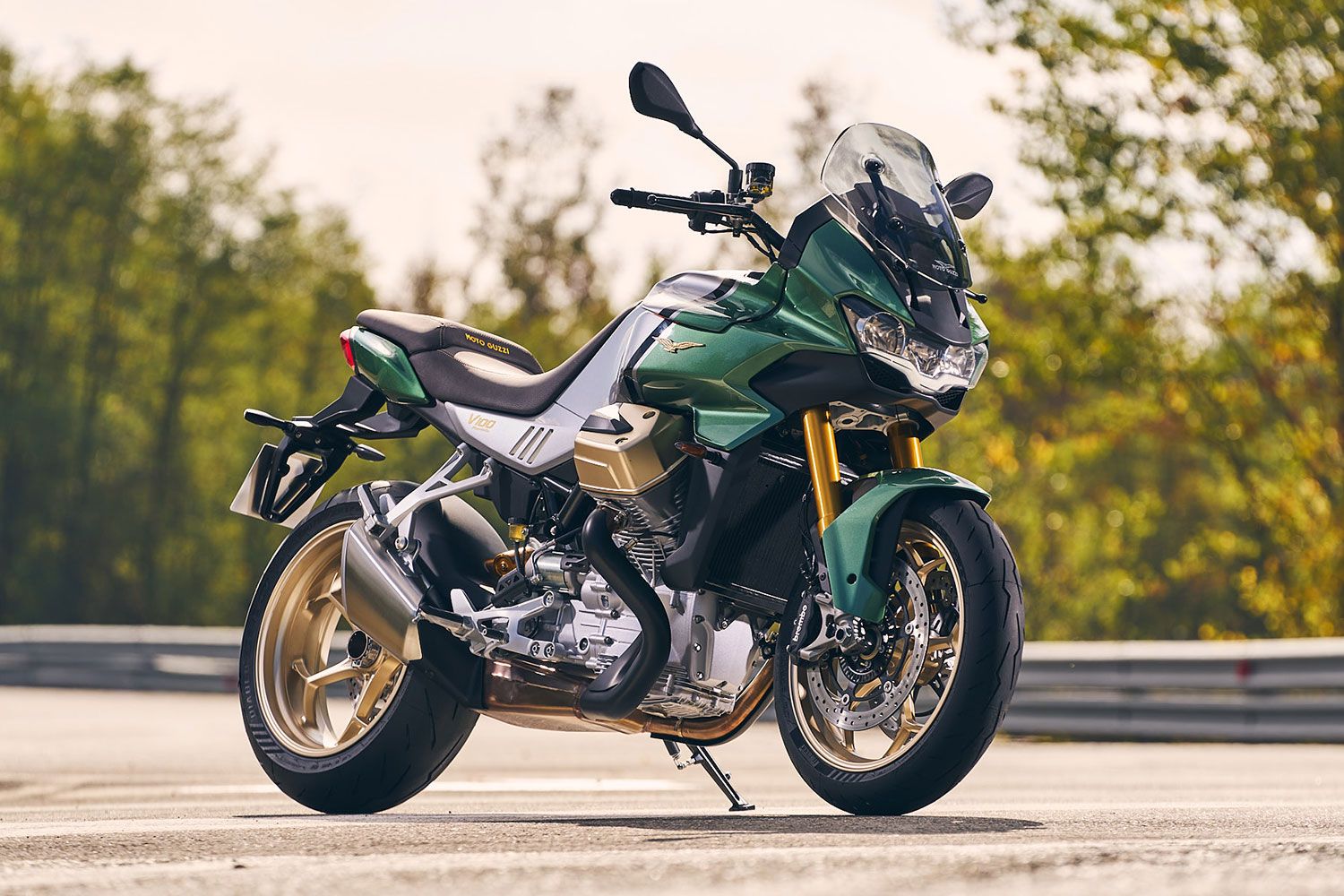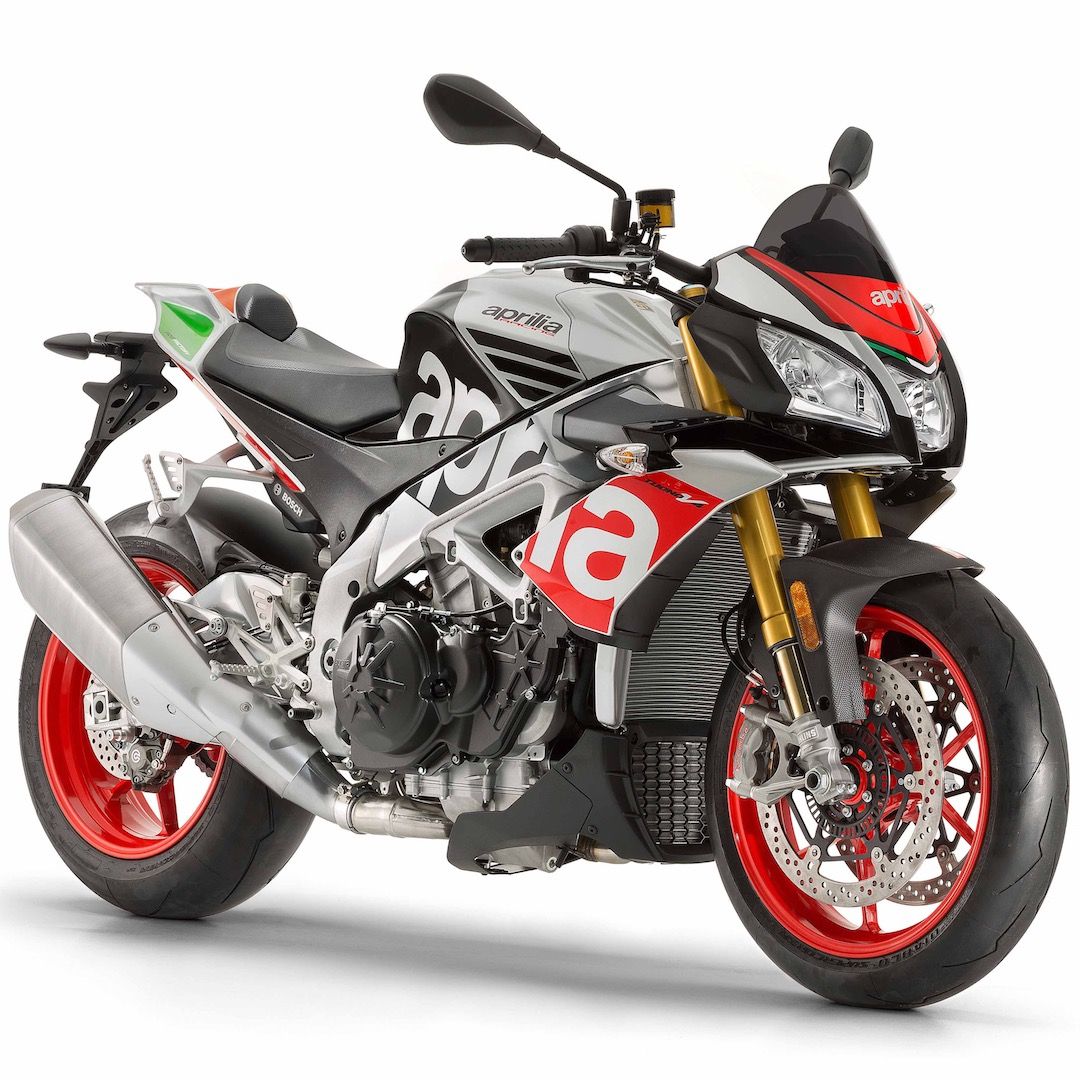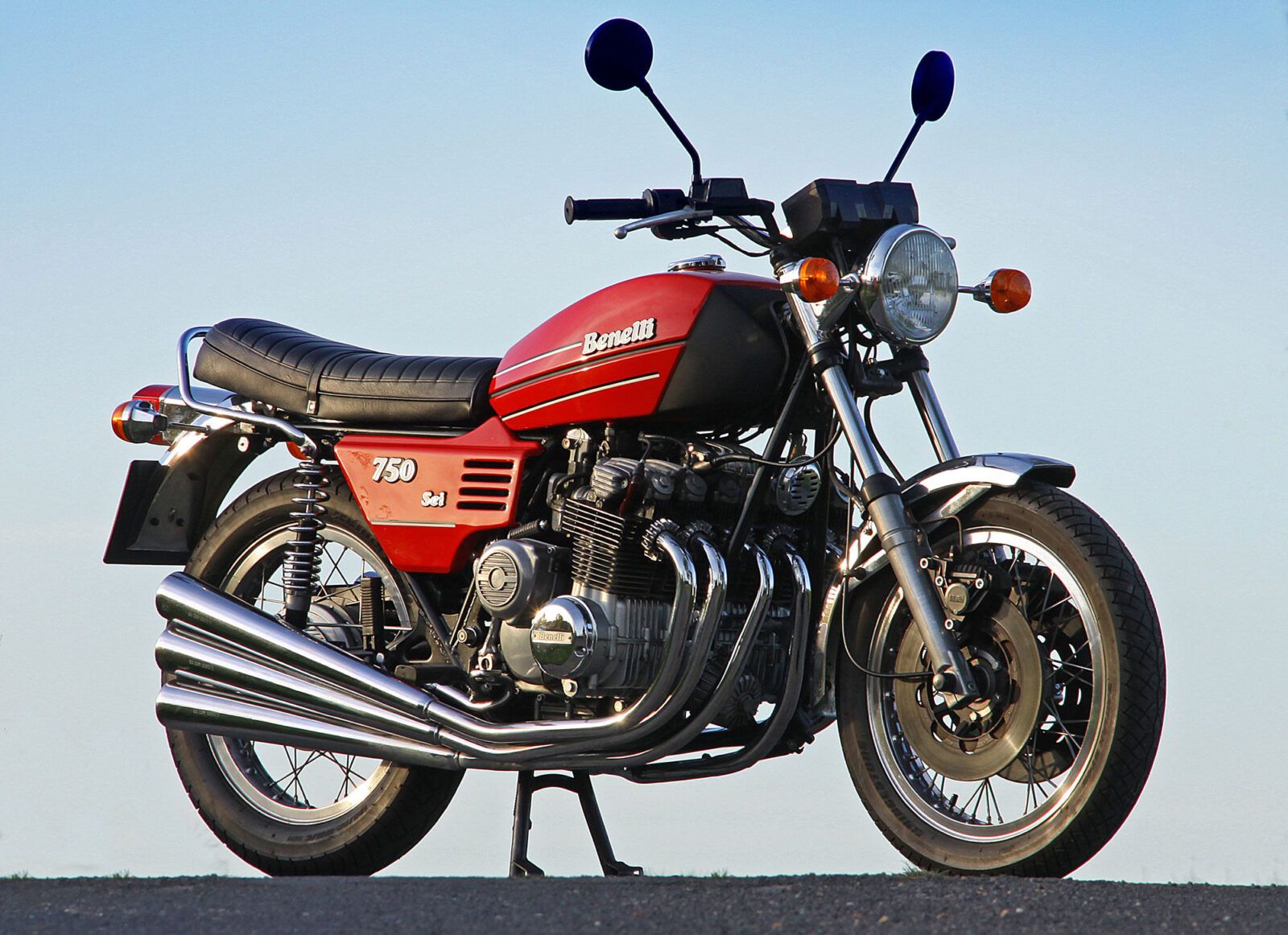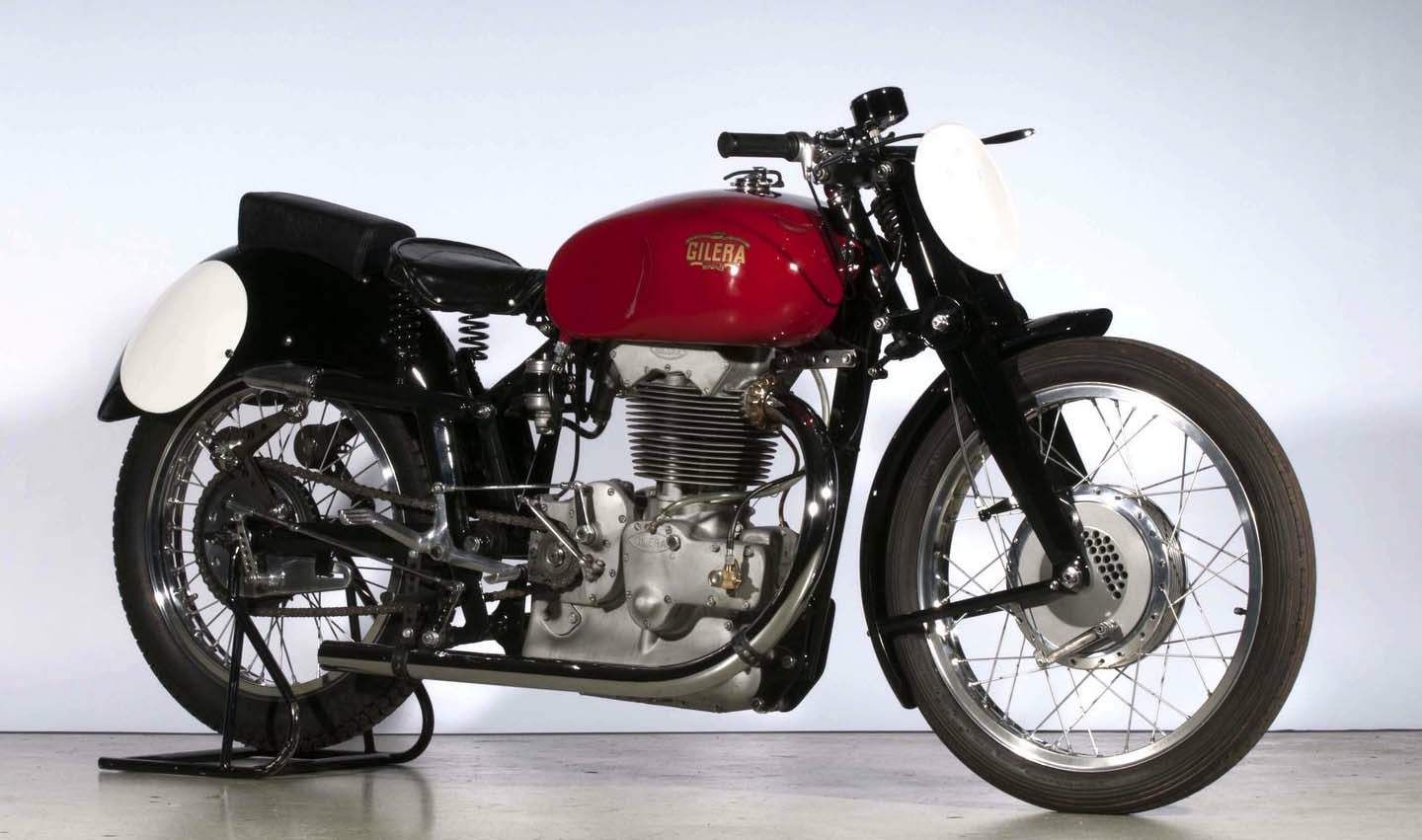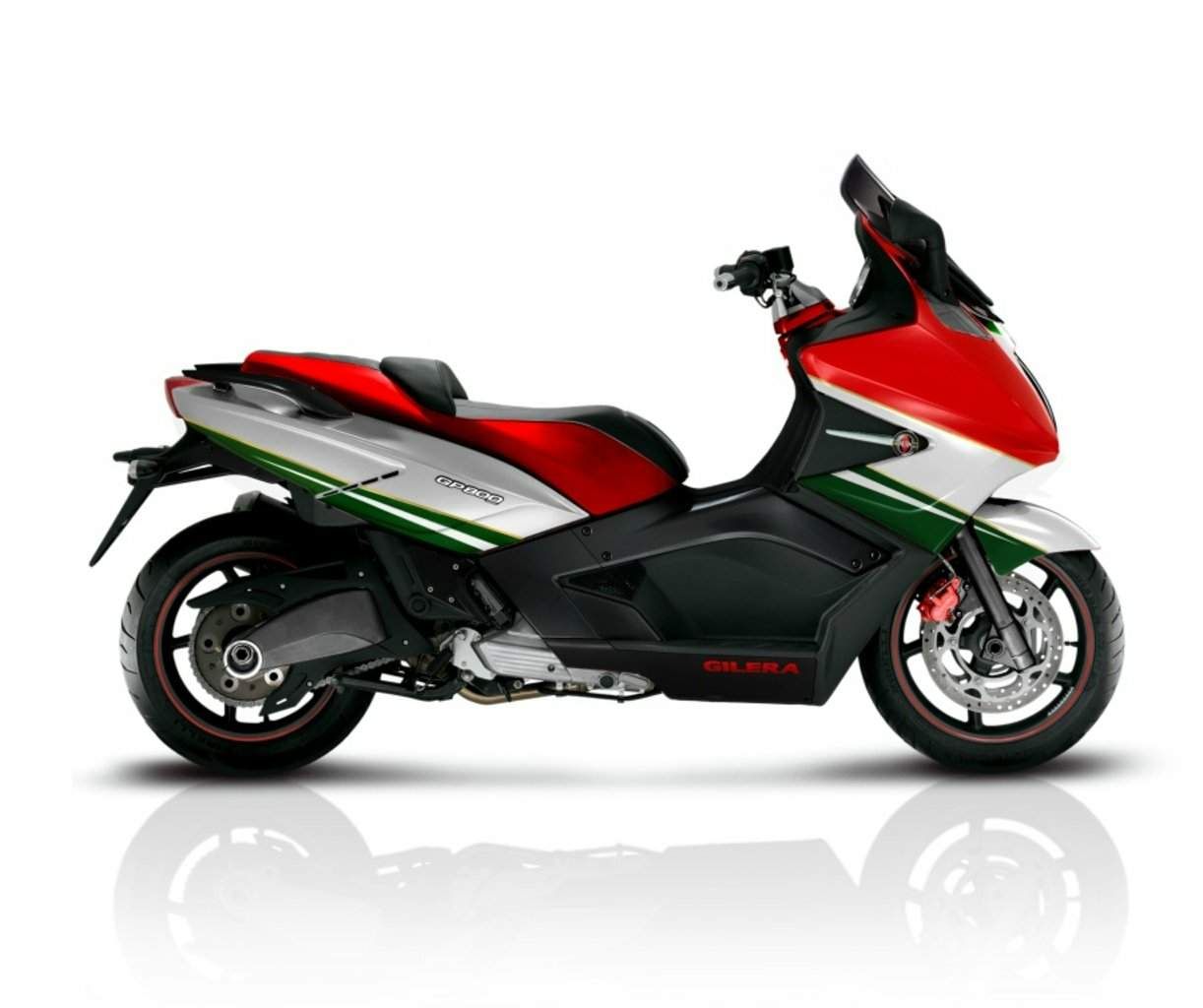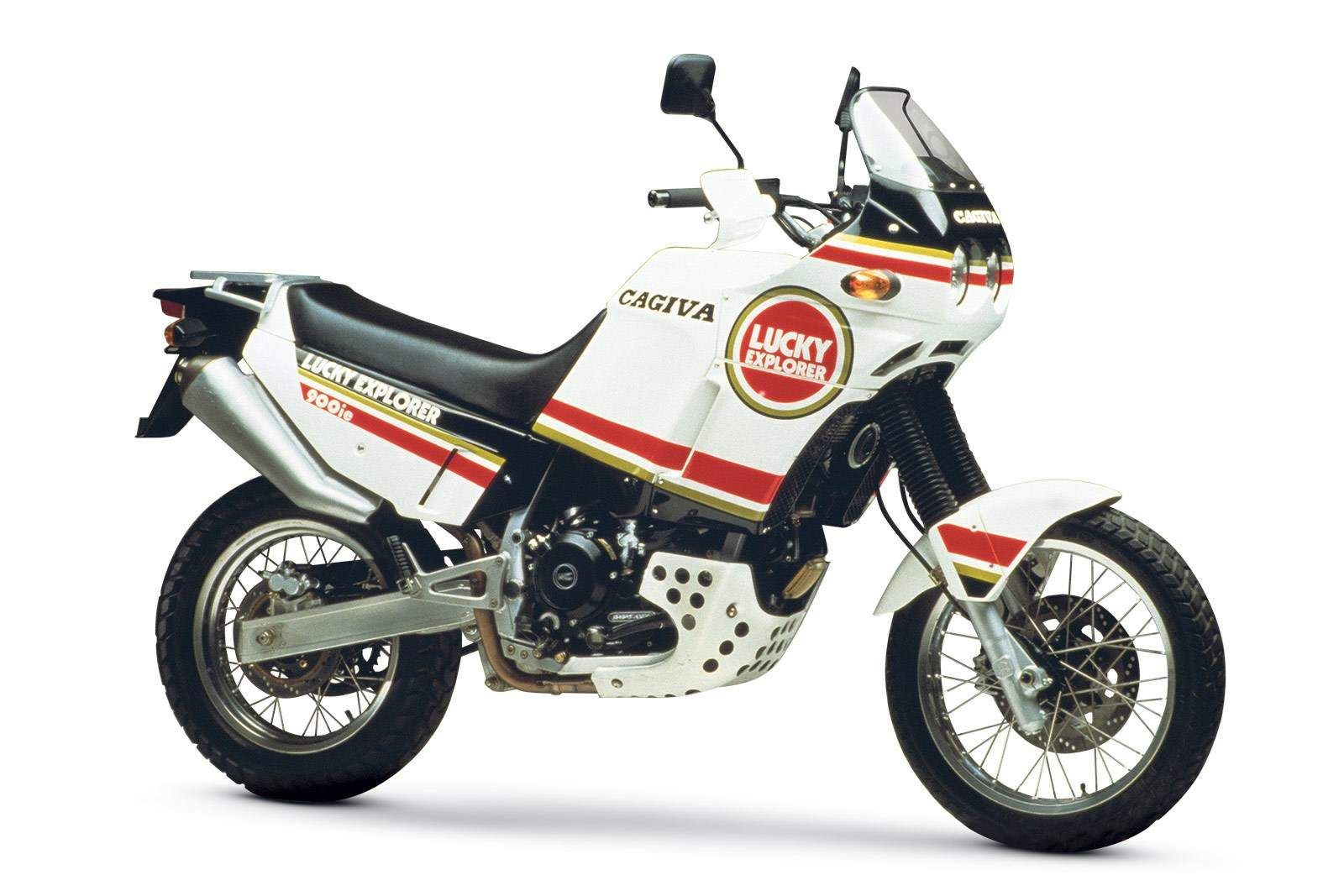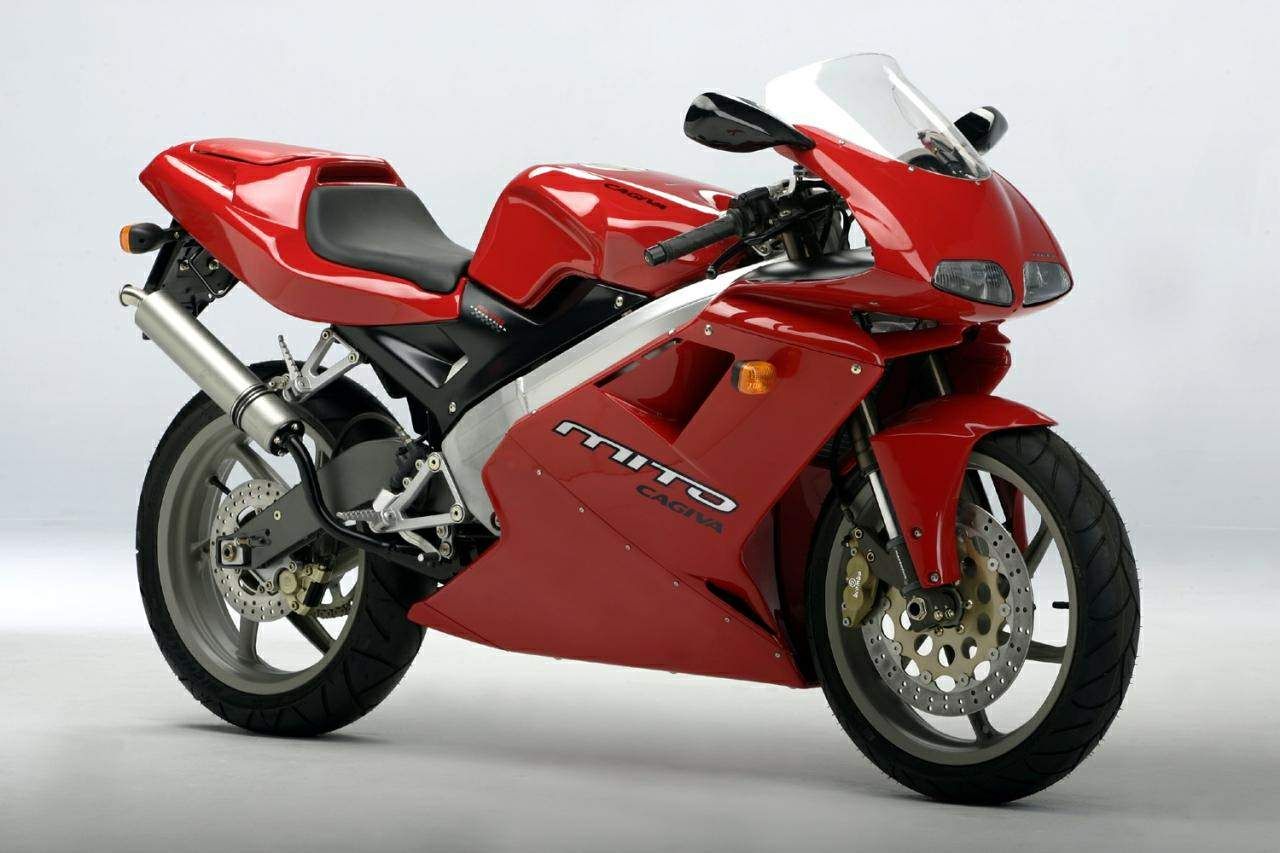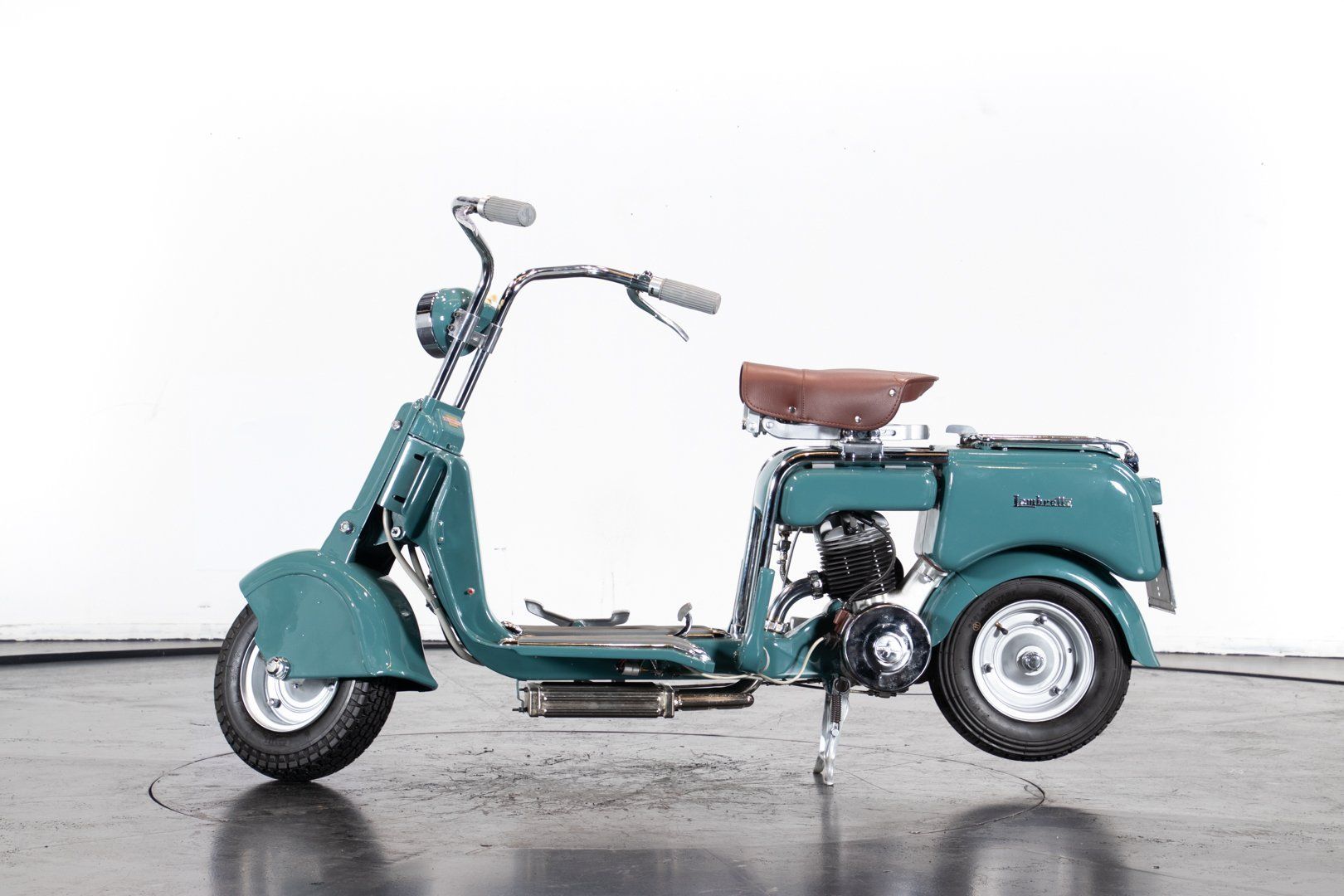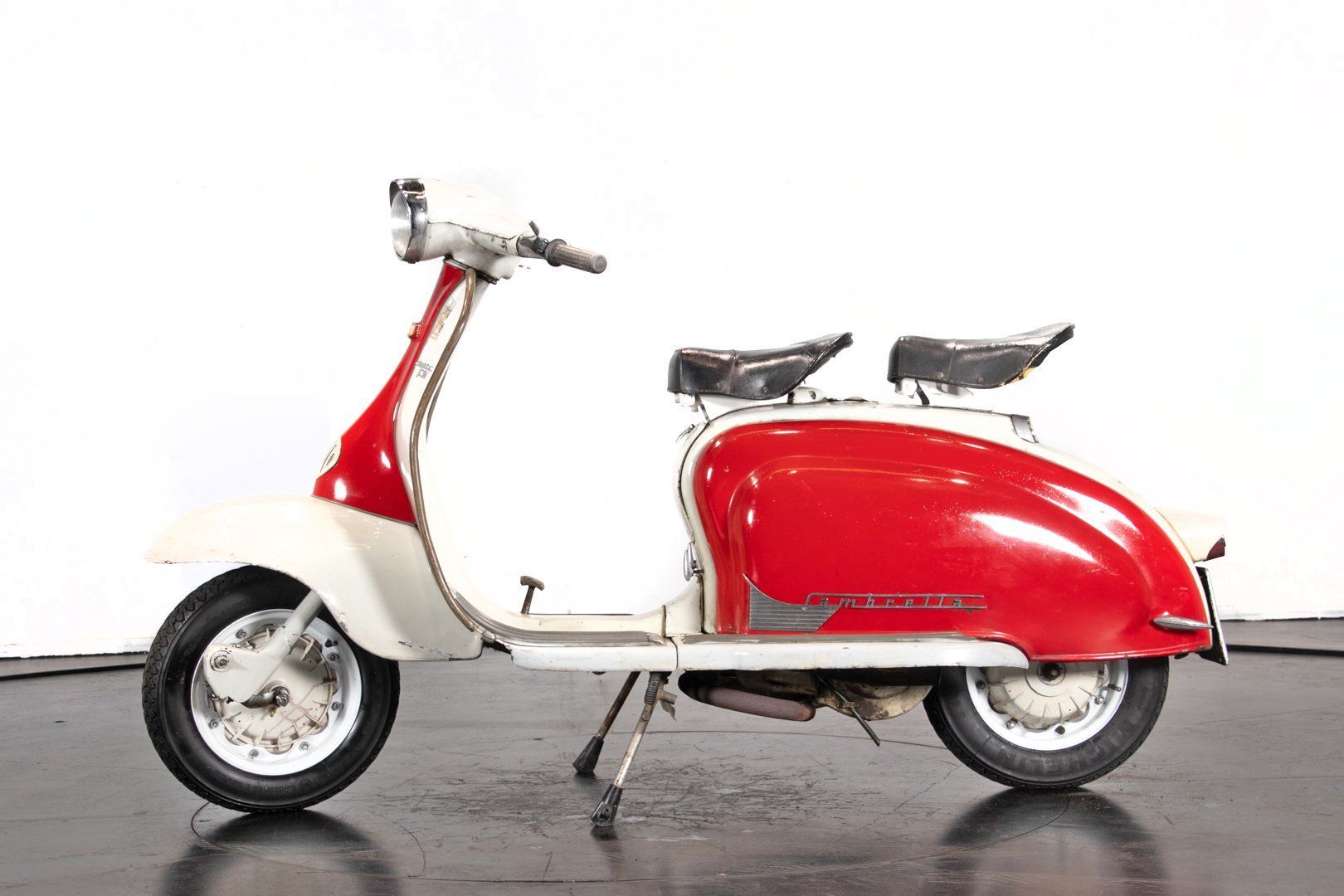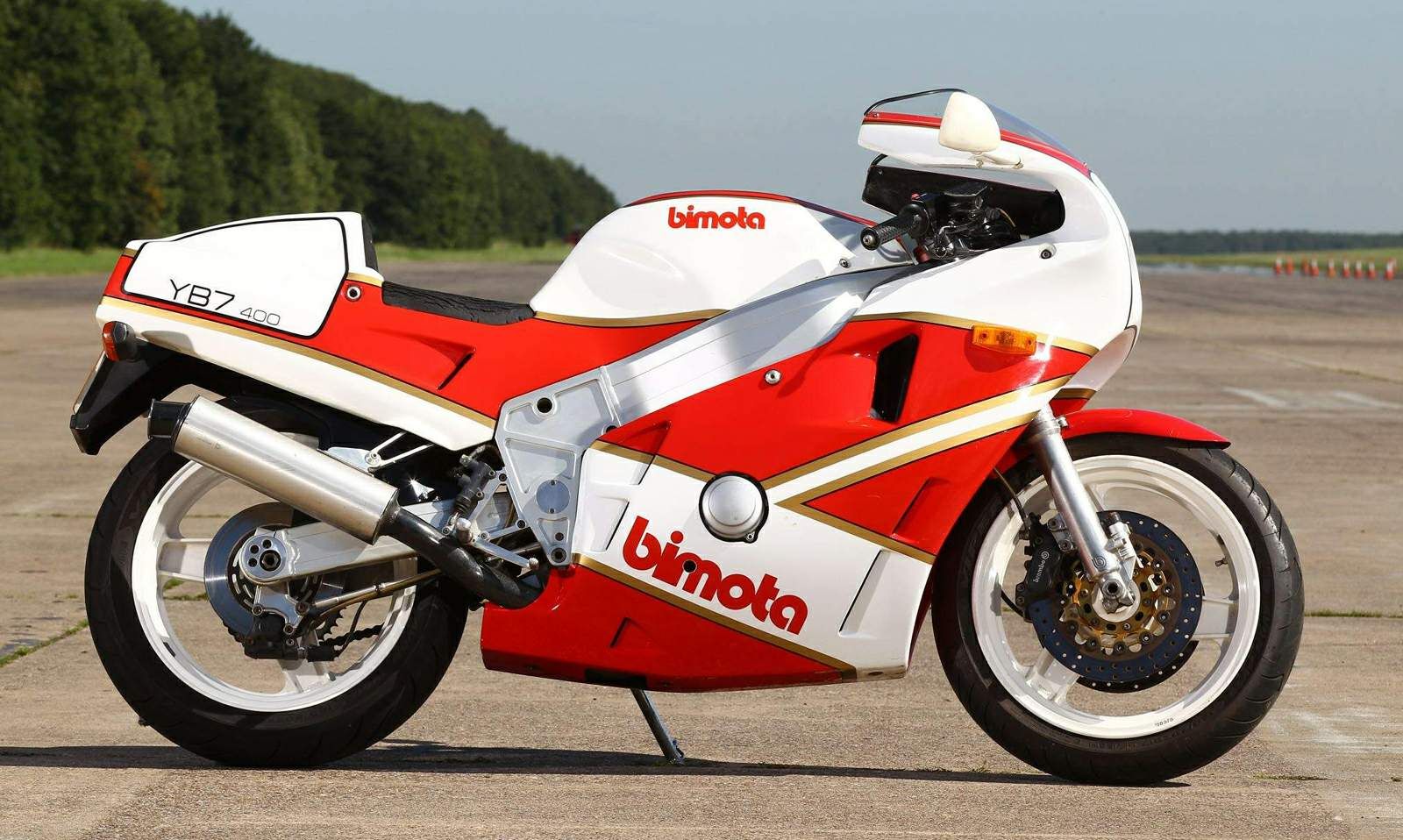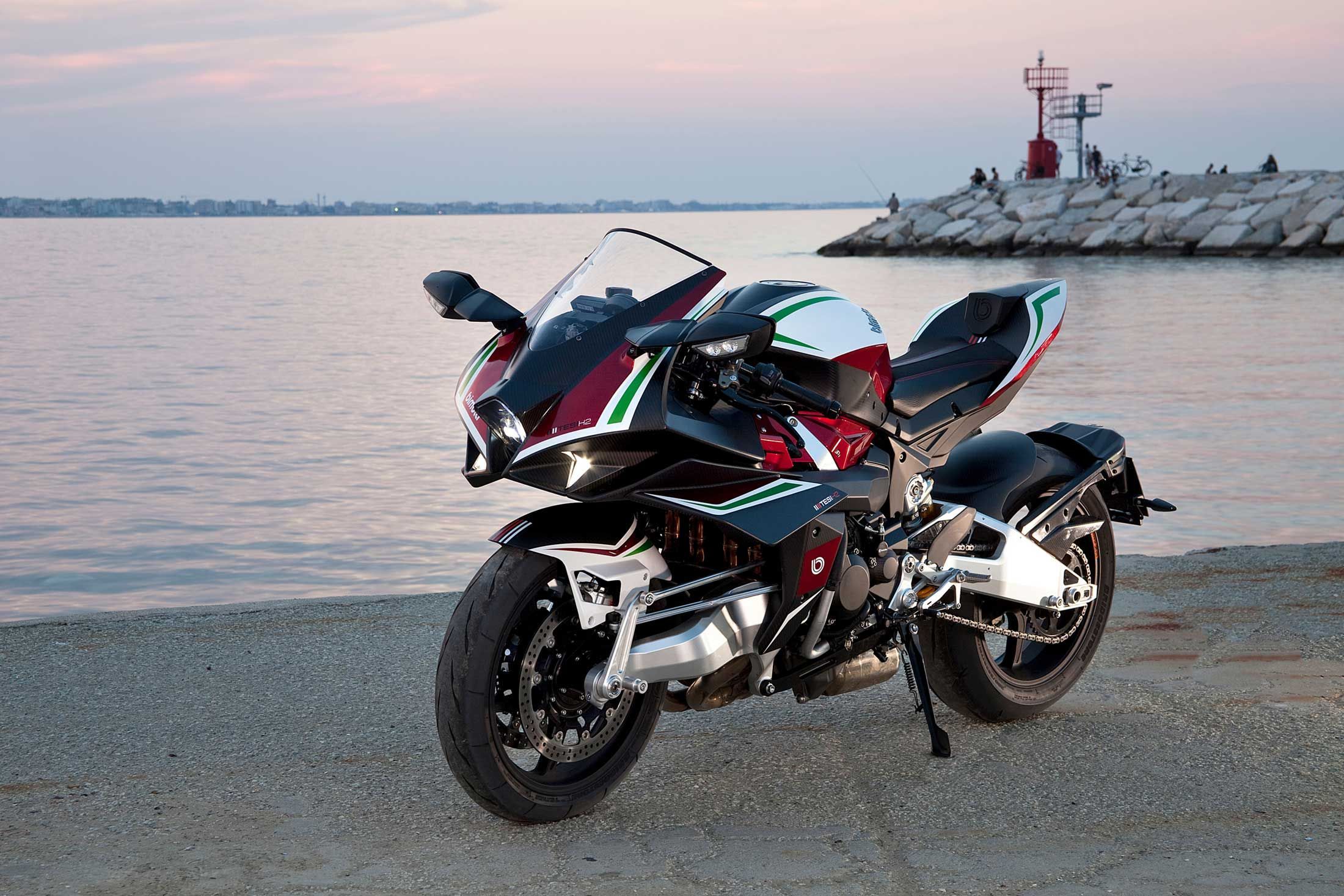The Italians are renowned for their engineering prowess and for their sense of style, both of which have been combined to produce some of the most iconic automotive and motorcycling brands in the world. In the motorcycling world, this is all the more fascinating due to the fact that many of the motorcycle manufacturers only started producing motorcycles after the Second World War, when general engineering companies turned to building motorcycles in order to get a struggling economy and population moving again. The story of the Italian motorcycle industry is one of constant flux as brands experience mixed fortunes over the years, but, in 2022, the Italian motorcycle industry boasts more motorcycle manufacturers than any other country.
Ducati
The most famous of them all - Ducati. Ducati was founded in 1926 by Cavalieri Ducati and his three sons, manufacturing vacuum tubes, condensers, and other radio components, and Ducati electronic products were much sought after. After the factory in Bologna, Northern Italy, was bombed into destruction, the Ducati management started fitting a proprietary engine to a bicycle to provide cheap transport. Eventually, Ducati produced its own design of a motorcycle using the same engine. Introduced in 1950 and called the Cucciolo (Italian for ‘puppy’), it was the first real Ducati.
From there, Ducati manufactured single-cylinder engines of 250, 350, and 450cc displacement through the 1960s, some using desmodromic valve actuation, which does away with valve springs. In the early 1970s, the first Ducati V-twin engine appeared, of 750cc and featuring desmodromic cylinder heads. From that point on, all Ducatis would be V-twin-powered, until the arrival of the V4 engine in the Panigale model in 2018. For many years in the 1980s and 1990s, Ducati concentrated on sports bikes and the naked Ducati Monster but, in the 2000s, branched out into adventure bikes, retro-styled roadsters, and muscle cruisers.
Racing has always been a strong focus for the company, with notable success in World Superbike racing, with 14 riders’ titles and 17 manufacturers’ titles, and British Superbike racing, with 12 titles. Ducati returned to Grand Prix racing in 2003, taking its one and only MotoGP title in 2007 with Casey Stoner.
MV Agusta
Perhaps Italy’s most revered motorcycle manufacturer, which was for a long time in the 1970s extremely exclusive with only a few road-going machines built every year. Formed as an aircraft manufacturing company - Agusta - in the early 1900s, MV Agusta as a motorcycle manufacturer came into existence as yet another company trying to survive after the Second World War, when Italy was banned from producing aircraft. In line with so many other companies, Count Domenico Agusta foresaw the need for cheap mass transport solutions and, in late 1945, the first MV Agusta motorcycle appeared, powered by a 98cc single cylinder engine. Through the 1950s and ‘60s, MV Agusta produced many small-displacement motorcycles.
It was on the racetrack that MV Agusta made its name, attracting - much as Ferrari did in automobile racing - the very best talent. Between 1952 and 1976, MV Agusta won 38 World Championship Grand Prix racing titles, including every 500cc title between 1958 and 1974. The company won 270 Grands Prix.
In the 1970s, MV Agusta produced some of the most exotic and expensive road motorcycles, such as the 750S and 750 America, which were produced in tiny numbers and cost over twice as much as contemporary models from the likes of Honda and Yamaha. Since the 1980s, MV Agusta has been owned by Cagiva, Malaysian company Proton, and surprisingly, Harley-Davidson! Now under Russian ownership, MV Agusta continues to produce sporting and exclusive motorcycles.
Vespa
Again, born out of the ruins of the Second World War, the Vespa scooter was a product of the Piaggio engineering company. Unmistakably Italian in concept and design, it remains a design icon to this day. Famously, when Enrico Piaggio, son of founder Rinaldo Piaggio, first saw the prototype for what was to become the Vespa scooter, he exclaimed, ‘Sembra una vespa’, which translates to, ‘it looks like a wasp,’ with its bulbous behind, slim waist and handlebars looking like an antenna.
The Vespa was immediately successful, with each year’s sales doubling the previous year. It quickly became the darling of ordinary Italians who needed cheap transport but who were still obsessed with style: the Vespa gave them both. The first model had a 98cc two-stroke engine and a manual gearbox controlled via the left-hand twist grip, which became a trademark of the Vespa up to the 1990s, when the first automatic transmission model was introduced. In essence, the design of the Vespa has remained true to the original versions in the 1940s, proof of how right the design was from the outset.
Moto Guzzi
The oldest European motorcycle manufacturer in continuous production, Moto Guzzi was founded in 1921 and is known today primarily for its transverse V-twin engine, which has been in production since the late 1960s. Moto Guzzi was conceived by two aircraft pilots and their mechanic serving in the Italian Air Corp during World War 1, Giorgio Parodi, Giovanni Ravelli and Carlo Guzzi. They envisaged creating a motorcycle company after the war. Parodi (the son of wealthy Genovese ship-owners) would finance the venture, Ravelli (already a famous pilot and motorcycle racer) would promote the bikes with his racing prowess and Guzzi would engineer the motorcycles. Ravelli died just days after the war's end in an aircraft crash and is commemorated by the eagle's wings that form the Moto Guzzi logo.
The company’s first engine was a horizontal single-cylinder, and it is this type, along with the transverse V-twin that has powered all Moto Guzzis. Like its fellow Italian manufacturers, Moto Guzzi was a force to be reckoned with in Grand Prix racing after 1949, winning eight World Championships and 11 Isle of Man TT races. The company created the incredible 500cc V8 racing engine for use in World Championship racing.
After the Second World War, Moto Guzzi, along with all other Italian manufacturers, concentrated on small-displacement models. When Guzzi threatened to attack the scooter market, as populated by Vespa and Lambretta, the latter company retaliated with its own design for a v-twin motorcycle, leading the two companies to reach an agreement to not encroach on each other's territory. Moto Guzzi was the first manufacturer to introduce swing-arm rear suspension in 1928 and introduced the first motorcycle wind tunnel to aid in designing aerodynamic fairings, in 1950.
Aprilia
Along with Vespa, Moto Guzzi, Gilera, and Derbi, Aprilia is part of the Piaggio group of companies. As with so many Italian motorcycle companies, Aprilia was founded after the Second World War, producing bicycles. Unlike its stablemates at Piaggio, Aprilia only produced its first motorcycle in 1968, a 50cc moped, and it was only in 1981 that the first over-500cc road bikes appeared, having been involved in motocross, trials, and enduro since the mid-1970s.
Into the 1990s, and Aprilia launched the two-stroke RS125 and RS250 sports bikes, as well as the now-iconic RSV Mille, a 1000cc superbike with a V-twin engine. In 2000, Aprilia bought Moto Guzzi and Laverda, only for Piaggio to buy the whole lot in 2004, forming the world’s fourth-largest motorcycle group, with an annual production capacity of 600,000 motorcycles.
Despite being the smallest of the Italian manufacturers, Aprilia has an enviable record in the smaller classes of motorcycle racing, winning nine 125cc World Championships and ten 250cc World Championships between 1995 and 2011. The current RSV4 and Tuono V4 sports bikes are regarded as two of the best available to buy, even if Aprilia’s reputation for mechanical fragility has never quite been fully retracted.
Benelli
Binelli is another of those Italian manufacturers that has had a shaky career, often being on the point of bankruptcy but still producing some of the best and most distinctive motorcycles, especially in the 1970s.
Benelli is the second-oldest motorcycle manufacturer in Italy, formed in 1911. In the early days, there was just the Benelli garage which repaired motorcycles and bicycles but, in 1919, the first in-house built motorcycle was shown to the public. By 1920, the company was building its own engine, a 75cc two-stroke single cylinder that fitted easily onto a bicycle frame, and by 1921, the company had produced a 98cc motorcycle. In line with the other Italian manufacturers, Benelli concentrated on smaller-capacity motorcycles up to the end of the 1960s, with the largest engine being a 650cc parallel twin.
As with the rest of the world’s motorcycle manufacturers, Benelli was affected badly by the arrival of the Japanese manufacturers. The company was bought by Alejandro De Tomaso, an Italian-Argentinian industrialist who also made cars under his own name before buying Maserati, Innocenti, and styling houses Ghia and Vignale. He also bought Moto Guzzi. The 1970s were made notable with the arrival of the 750cc Sei model, featuring an inline six-cylinder engine, which was based on a four-cylinder engine that was copied from the Honda CB500 Four. Always slightly obscure, Benelli was bought by the Chinese Qianjiang Motor Group in 2005 and Benelli motorcycles are still built in Pesaro, Italy.
Gilera
Italy’s oldest motorcycle manufacturer, founded in 1909 by Giuseppe Gilera. The early decades were devoted to producing small-displacement motorcycles and scooters and, in 1935, the company produced the first transverse inline four-cylinder motorcycle, after buying the rights to the Rondine four-cylinder engine. It was, at the time, the most powerful motorcycle engine in the world, producing 60 horsepower and giving the 500 Rondine racer a top speed of 140mph.
Gilera was active in Grand Prix racing alongside MV Agusta and Moto Guzzi and won the 500cc world title six times in the 1950s but pulled out of racing with the other two in 1957, as the market for motorcycles was shrinking in Italy at the time. MV Agusta almost immediately reversed its decision and continued but Guzzi and Gilera held true to the withdrawal. The 1960s weren’t kind to Gilera and by 1968, the company was in receivership before being bought by the Piaggio Group. From that day, Gilera has concentrated solely on the scooter market.
Cagiva
Another late starter, Cagiva was founded in 1950 by Giovanni Castiglioni, initially producing metal components for motorcycle manufacturers. It was only in 1978 that the first Cagiva motorcycles were produced. In 1983, Cagiva started using Ducati V-twin engines for its motorcycles, and in 1985, the company bought Ducati outright, choosing to continue the Ducati name as it had a lot more heritage and recognition both in Italy and around the world.
The story of Cagiva is typically Italian and complicated. Cagiva bought Moto Morini, Husqvarna, and MV Agusta, rivaling Piaggio for the number of brands under its custodianship. Then, Ducati and Moto Morini were sold off, while the business was restructured and MV Agusta became the prime brand. Then, Harley-Davidson bought the group, before selling MV Agusta and Cagiva back to the son of founder Castiglioni, Claudio. He chose to concentrate on the MV Agusta brand and the Cagiva name hasn’t been seen on a motorcycle since 2012, although there are always rumors that a new motorcycle bearing the Cagiva name will appear.
Lambretta
If the Lambretta and Vespa are largely similar in concept and design, that is because they were both designed by Corradino D’Ascanio, who incidentally, had designed the first modern helicopter for Agusta, the success of which funded the MV Agusta racing team. Ferdinando Innocenti had built up a steel tubing empire since the early 1920s. In a familiar story, his factory was bombed out during the Second World War and Innocenti saw the future of cheap, private transport and decided to produce a motor scooter, competing on cost and weather protection against the ubiquitous motorcycle.
D’Ascanio’s design was not to Innocenti’s liking as it didn’t use steel tubing - Innocenti’s main business - and the two men fell out over the issue, so D’Ascanio decamped to Piaggio and took the design with him: that became the Vespa. Innocenti continued with the concept and the first Lambretta appeared in 1947. Incidentally, the Lambretta name is derived from the word Lambrate, the suburb of Milan named after the river Lambro which flows through the area, and where the factory was located. 'Lambretta' was the name of a mythical water-sprite associated with the river which runs adjacent to the former production site.
The end for Lambretta came in the early 1970s, as small cars became ever more affordable and decimated the scooter market, just as Innocenti’s financial security faltered. In 2017, the Lambretta name reappeared on a new version of the original scooters.
Bimota
Not a motorcycle manufacturer in the traditional sense, but a constructor of motorcycles using bought-in engines from the likes of Suzuki, Ducati, BMW, Yamaha, and Honda. The company was founded in 1973 by Valerio Bianchi, Giuseppe Morri, and Massimo Tamburini. The company name is derived from the first two letters of each of the three founders' surnames: Bianchi, Morri, and Tamburini. Tamburini is an important figure in Italian motorcycling, having designed the Ducati Paso, Ducati 916, and the MV Agusta F4.
Bimota’s specialty was building motorcycle frames that were measurably better than any other manufacturer. Frame design had stagnated in the 1970s, so that is where Bimota concentrated its efforts. You knew what engine was in a Bimota by the name: YB for Yamaha, SB for Suzuki, DB for Ducati, and so on. The new frames transformed the motorcycles’ handling but were always built in small numbers.
The company wasn’t afraid to experiment, as the Tesi 3D, with its hub-centre steering, proves. Another direction, the V Due, featured Bimota’s own engine design, but it was flawed and every example sold had to be returned to the factory for rectification. This, when taken in conjunction with he loss of the main racing team sponsor, owing a lot of money, caused Bimota to close its doors in 2000. The name was resurrected in 2003 by a group of investors but, by 2017, things were looking shaky again. Kawasaki stepped in in 2019, buying a 49-percent stake and announcing the intention to manufacture Bimotas using Kawasaki parts.


